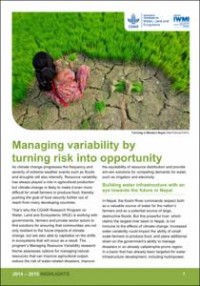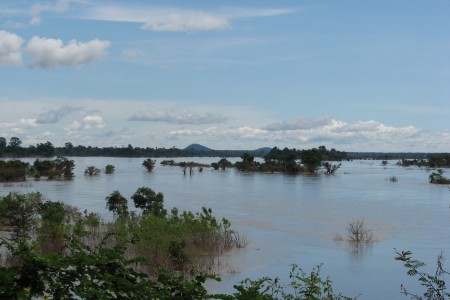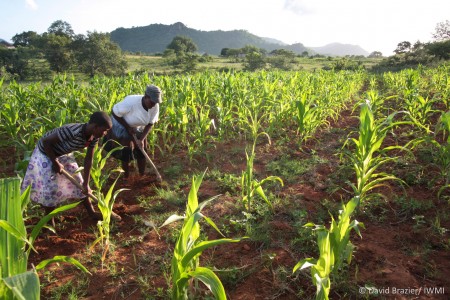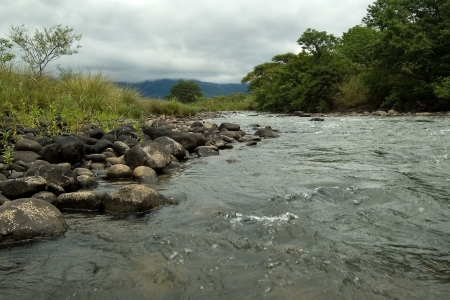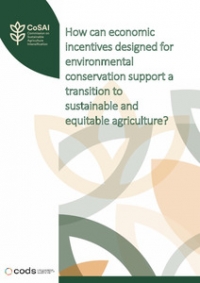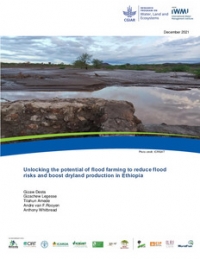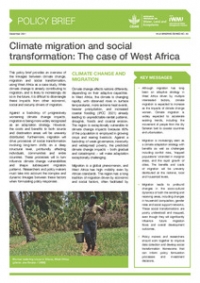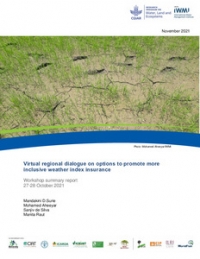As climate change progresses the frequency and severity of extreme weather events such as floods and droughts will also intensify. Resource variability has always played a role in agricultural production but climate change is likely to make it even more difficult for small farmers to produce food, thereby pushing the goal of food security further out of reach from many developing countries.
That’s why the CGIAR Research Program on Water, Land and Ecosystems (WLE) is working with governments, farmers and private sector actors to find solutions for ensuring that communities are not only resilient to the future impacts of climate change, but are also able to capitalize on the shifts in ecosystems that will occur as a result. The program’s Managing Resource Variability research theme assessses options for managing natural resources that can improve agricultural output, reduce the risk of water-related disasters, improve the equitability of resource distribution and provide win-win solutions for competing demands for water, such as irrigation and electricity.
Building water infrastructure with an eye towards the future in Nepal
In Nepal, the Koshi River commands respect both as a valuable source of water for the nation’s farmers and as a potential source of large, destructive floods. But this powerful river, which claims the largest river basin in Nepal, is not immune to the effects of climate change. Increased water variability could impact the ability of small-scale farmers to produce food, and place additional strain on the government’s ability to manage disasters in an already catastrophe-prone region. In a basin that has already been targeted for water infrastructure development, including hydropower, careful planning will be essential to maintaining a healthy ecosystem.
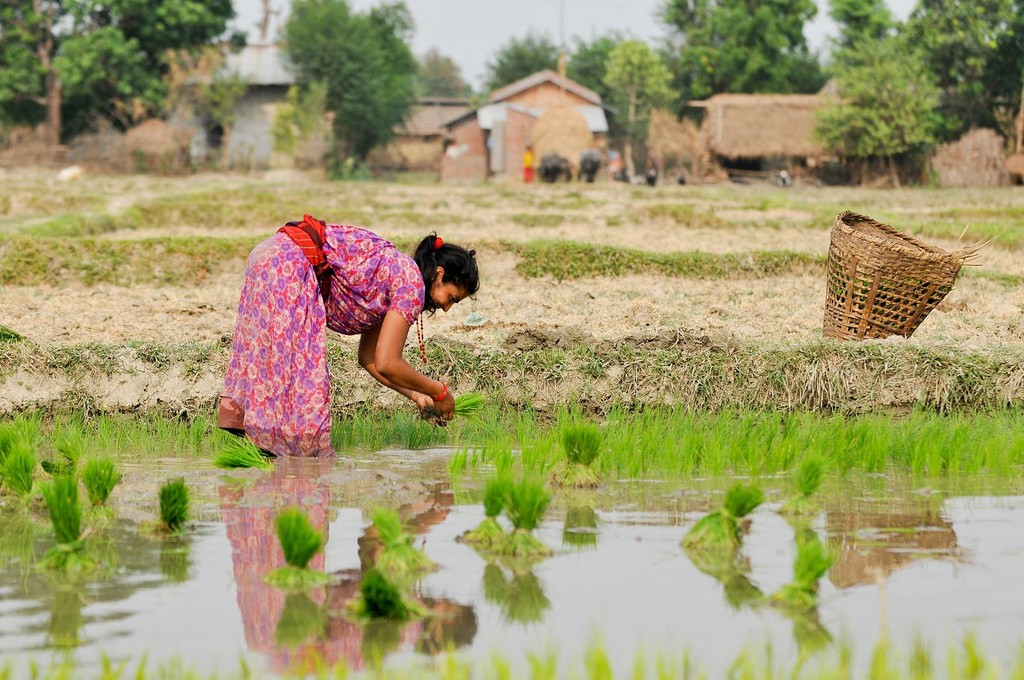
One WLE project led by the International Water Management Institute in Nepal is informing discussions about climate adaptation strategies by producing models that simulate future conditions in the Koshi River basin. Researchers inputted climate data from the CGIAR Research Program on Climate Change, Agriculture and Food Security (CCAFS) into the Soil and Water Assessment Tool (SWAT) to simulate the volume of water entering and leaving the river basin for a baseline year, as well as the 2030s and 2050s.
By comparing the baseline with the projected data, researchers found that the impacts of climate change are likely to be more noticeable on smaller scales (sub-basin level, as opposed to basin level) and short timelines (seasonal, as opposed to annual). Interestingly, lack of water did not appear to be a pressing concern for the Koshi basin. In fact, because only 14% of the basin’s water is put to use, the researchers decided to focus on how the region may benefit from additional water storage and distributions facilities.
The next step was to conduct a resource assessment for the basin that included water yield distribution maps on water demand, use and unmet demands; future hydropower and irrigation development; and an assessment of perceptions regarding integrated water resource management, climate change projects and adaptation strategies.
This work allows decision makers to see how different combinations of water infrastructure will perform under a range of plausible climate futures and how they will impact the ecosystems and people that reside within the basin. These multi-criteria assessments provide a more realistic picture of the impact of regional water development plans, which often focus only on economic costs.
The research is also contributing to hydropower development assessments carried out by the World Bank in the Koshi basin. The project’s SWAT and WEAP models have been transferred to the World Bank team, which is using them to assess the feasibility of building multiple dams, predict future sediment flow and its potential threat to dams, and the vulnerability of future infrastructure investments to climate change. It is expected that these assessments will help inform the World Bank’s global approach to evaluating potential investments in the face of climate change. The Nepal Investment Board, which distributes licenses to hydropower investors, has also agreed to consider the study’s findings.
Taming floods by putting them underground – exploring potential across Asia
Imagine a way to simultaneously solve two of the world’s most pressing water concerns, floods and droughts, by storing water in natural underground aquifers when there is too much of it and pumping it back out when there isn’t enough. The benefits of such a system to ecosystem services are potentially huge; it would reduce groundwater depletion resulting from activities such as farming and provide a buffer in the case of unsatisfactory levels of wet season precipitation or drought. In addition, supplementing groundwater resources with stored floodwater could increase agricultural productivity, improve farmer livelihoods and strengthen economies.
Too good to be true? A group of WLE researchers believes it is possible with the ‘Underground Taming of Floods for Irrigation’ (UTFI) approach. In 2014 they continued to produce the evidence needed to convince relevant actors from government, donors and the private sector to pilot UTFI, with the hopes that successful demonstrations will lead to large-scale investment. The researchers analyzed biophysical suitability, and conducted institutional and economic analyses in order to map areas where UTFI may be possible across the flood-prone regions of the Ganges River basin. Through another WLE project, the same approach was applied to locations in Sri Lanka and Myanmar.
The exercise helped to identify a prospective UTFI pilot site, the Ganges sub-basin, Ramganga, in northern India. Hydrologic models were developed, which describe surface and subsurface water flows with and without UTFI interventions. Relevant policies and institutions were analyzed to identify viable governance arrangements for implementing UTFI in the region. The researchers also compared different mechanisms for operating the system, including non-market, participatory approaches and market-based approaches such as Payment for Ecosystem Services. This work is helping to provide greater clarity on the exact communities and stakeholders that must be involved in the process.
But the researchers also recognize that in order to convince relevant decision makers that UTFI is a worthy investment, they have to make the business case for it. In order to do so they developed an economic framework that considers rural-urban linkages and flood damages that can be avoided, while highlighting important tradeoffs in terms of gender, ecosystem services and climate change that could arise as a result of investment or non-investment.
Interest in the UTFI approach has been achieved through continuous and active dialogue with key stakeholders including government officials and donors. A series of presentations and discussions with high levels members of the Department of Irrigation of the Government of Uttar Pradesh India, Chief General Manager of National Bank for Rural Development, Secretary of the Ministry of Water Resources of India and others has resulted in the establishment of the first pilot project UTFI in Ramganga. From 2015 onwards the work is co-funded by the CCAFS, with additional funding secured from the Government of Japan, Ministry of Agriculture, Forestry and Fisheries.
